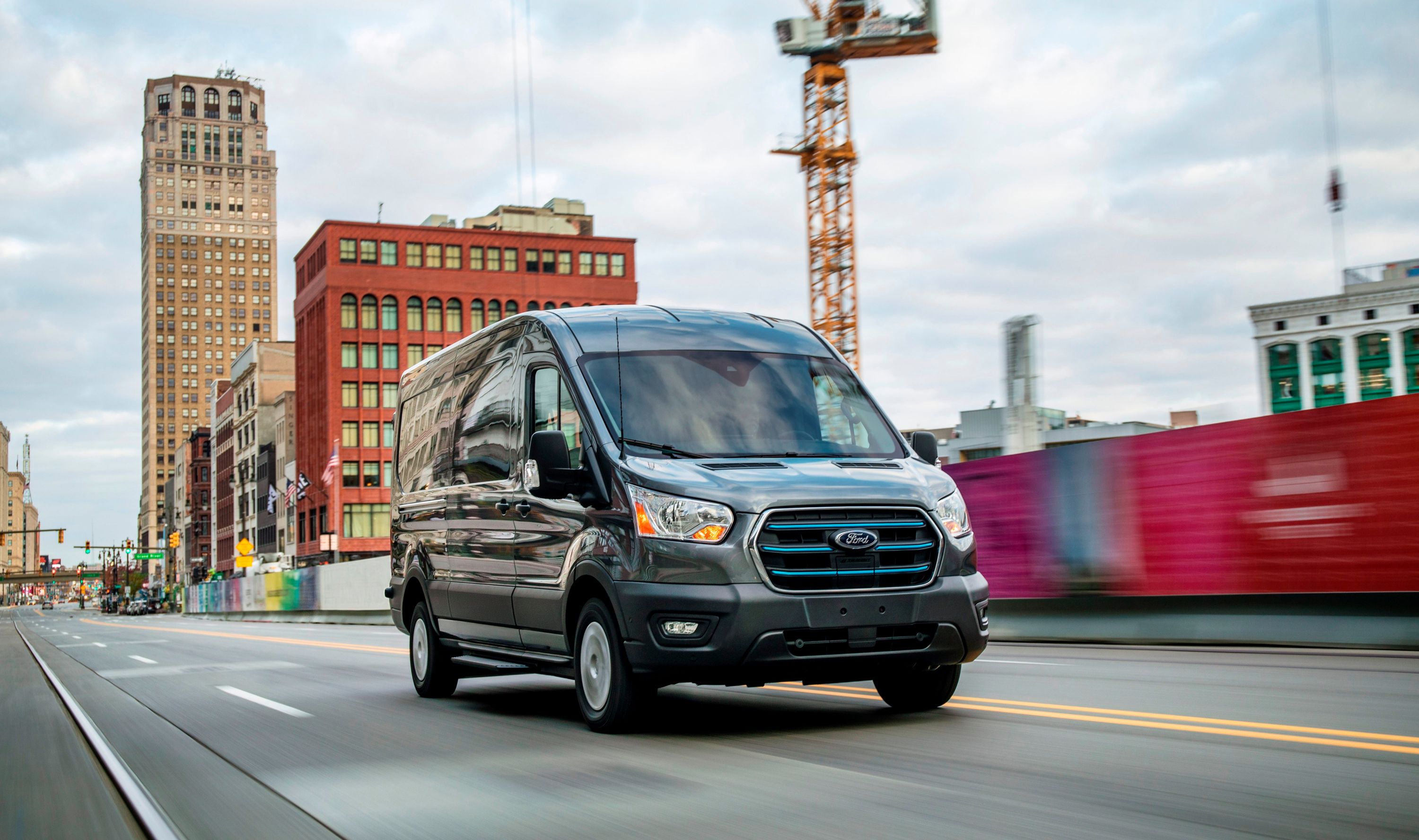2023 Ford E-Transit Cargo Van Review: The King Of Vans Goes Electric
As electric cars are becoming the norm, fleet operators are starting to look toward electric cargo vans, and the Ford E-Transit Cargo Van is one of the best options right now. It has a potent 266-horsepower electrified powertrain that enables it to haul payloads of up to 3,880 pounds; chassis cab and cutaway model have higher payloads, but for the purposes of this review, we are only covering the cargo van. It only has a maximum range of 126 miles, which is less than competitors like the upcoming Mercedes-Benz eSprinter, but still more than the average van in the USA drives per day. Ford has done its research to try to provide fleet owners with a capable vehicle that won't have their balance sheets seeing red, and with multiple body configurations and the ability to customize various features to one's needs, the new Ford E-Transit Cargo Van may be the ideal electric goods mover for forward-thinking business owners.
What's The Price Of The 2023 Ford E-Transit Cargo Van?
With a wide variety of configurations on offer, the price of the 2023 Ford E-Transit Cargo Van is a moving target. It starts at $53,790, but a change in roof height or body length will inevitably affect the final cost. For instance, adding a medium roof height raises the price to $54,555. With the high roof and the longest body, the price jumps to $58,970.
These prices of the Ford E-Transit Cargo Van are MSRP and do not include the manufacturer's $1,895 destination charge.
2023 Ford E-Transit Cargo Van Handling And Driving Impressions
The first thing you'll notice and appreciate in a test drive review of the Ford E-Transit Cargo Van is how silent and smooth it is. Without a V6 rumbling under the hood, there is a significant lack of shakes and rattles, even when traveling at higher speeds. It also gets going without too much fuss, thanks to the instantaneous torque delivery. This is despite the lower overall power outputs compared to its gas-powered cousin. It won't go overly fast, though, but it is more than sufficient for moving with the traffic around town or on the highway for brief jaunts.
Handling is about what you'd expect from a large, cumbersome vehicle, but the short nose devoid of an engine ensures you have a good view of the road, and there is available blind-spot assist and reverse assist for when you don't have clear sightlines behind. The rear independent heavy-duty suspension means that even fully loaded, handling doesn't take much of a hit. So long as you respect that the E-Transit is a sedate cargo-mover, you won't have any trouble.
Verdict: Is The 2023 Ford E-Transit Cargo Van A Good Van?
Ford is a pioneer in the commercial segment where electric vehicles are concerned. It carefully researched what buyers really need from their work vans and set out to create a product that would deliver on this at a reasonable price. We think it has succeeded in this mission. Yes, the 126-mile range doesn't sound like a lot, but this is still well above what most delivery vans drive per day. By keeping the size and weight of the battery down, Ford also keeps down the cost of the van, making it easier for buyers to transfer from gasoline to electric and lower the overall cost of ownership. It also has less horsepower, but the decent amount of torque that is instantly delivered to the wheels more than makes up for any shortcomings. It would be nice if some additional comfort and convenience features could be added, like power-adjustable seats with heating functions, so that the electric Ford E-Transit Cargo Van could better compete with the Mercedes and Ram, but for most owners, Ford's van will be a great addition to eco-friendly fleets.
What 2023 Ford E-Transit Cargo Van Model Should I Buy?
There are multiple body configurations on offer, so which model is best comes down to what you really need from your van. The van is presented with a regular, long, or extended body and either short, medium, or high roofs. Each supplies a different overall cargo capacity, as well as dimensions that will more easily accommodate certain items. Just keep in mind that these larger capacities normally come at the cost of maximum payload, so more space does not mean heavier items.

